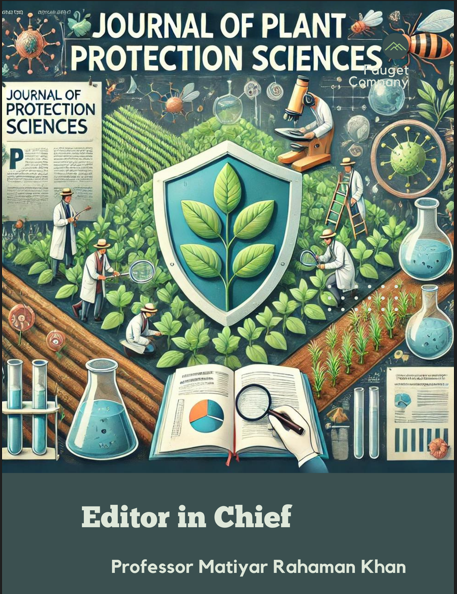Effect of biopriming of radish (Raphanus sativus) seed with some antagonistic isolates of Trichoderma
DOI:
https://doi.org/10.48165/Keywords:
carboxy methyl, cellulose (CMC), laminarAbstract
Application of biocontrol agent can be done in three ways (i) seed treatment, (ii) soil treat ment and (iii) foliar spray. Seed treatment has been considered the most convenient of the three as it is required in less amounts with higher efficacy. Seed being an essential com ponent of agriculture acts as a passive carrier of many diseases. Seed treatment with bio control agents may serve as an important tool for managing many soil-borne and seed borne diseases. This process is known as ‘biopriming’. Goals for biological seed treat ment include control of soil borne pathogens, colonization and protection of subterranean plant parts, and increased plant growth. Effec tive biocontrol agents have been developed for control of severe seed and seedling patho gens. Several researchers have reported the biological seed treatments for the protection of seed and control of pathogens causing seedling diseases (1,15,3). Similarly several scientists have got positive results of disease control and increased plant growth and yield in vivo and under field condition (6,4,2,11). The efficacy of biological seed treatment is influenced by soil pH and iron concentration (14), moisture, temperature and inoculums density of the pathogen (9). Trichoderma spp.
References
1. Bennet MA Fritz VA Callan NW. 1992 Horticul tural Technology 2: 345-49.
2. Bhagat S Pan S. 2008 Journal of Biological Con trol 22: 57-66.
3. Chet I Inbar J. 1994 Applied Biochemistry and Biotechnology 48: 37-43.
4. Dubey SC Suresh M Singh B. 2007 Biological Control 40(1): 118-27.
5. Gravel V Antoun H Tweddell RJ. 2007 Soil Biol ogy and Biochemistry 39: 1968-77.
6. Harman GE Howell CR Viterbo A Chet I Lorito M. 2004 Nature Reviews Microbiology 2: 43- 56.
7. Harman GE Petzoldt R Comis A Chen J. 2003 Phytopathology 94: 147-53.
8. Kleifeld O Chet I. 1992 Plant and Soil 144: 267- 72.
9. Mathre DE Callan NW Johnston RH Schewnd A. 1994 Crop Protection 13: 301-07.
10. Odunfa VSA Oso BA. 1979 Transactions of the British Mycological Society 73: 21-26.
11. Pan S Bhagat S. 2007 Journal of Mycology and Plant Pathology 37: 235-39.
12. Pan S Blah J Das A. 2011 Journal of Mycology and Plant Pathology 41: 43-48.
13. Rawat L Singh Y Shukla N Kumar J. 2012 Journal of Plant Pathology 94(2):353-65.
14. Weller DM. 1988 Annual Review of Phytopathol ogy 26: 379-07.
15. Whipps JM McQuilken MP. 1993 Aspects of bio logical control of fungal plant pathogen, pp 45 -79. In Exploration of microorganisms (Ed Jone G). Chatman and Hall, London.
16. Wright JM. 1956. Biological control of soil borne Pythium infection by seed inoculation. Plant Soil 8: 132-40.
17. Yedidia I Benhamon N Kapulnik Y Chet I. 2000 Plant Physiology and Biochemistry 38:863-73.

